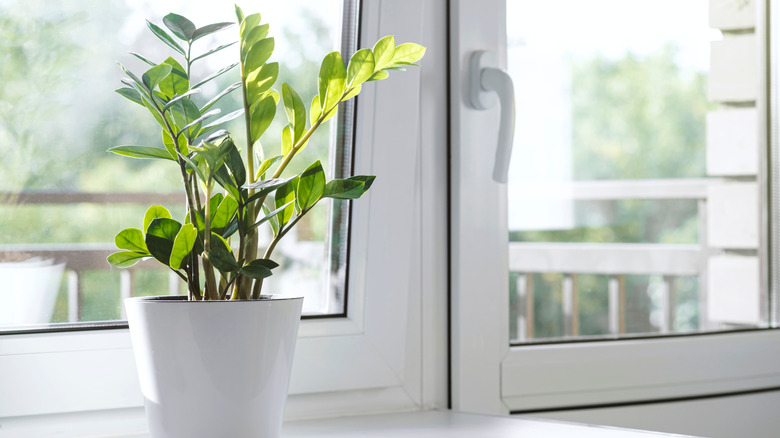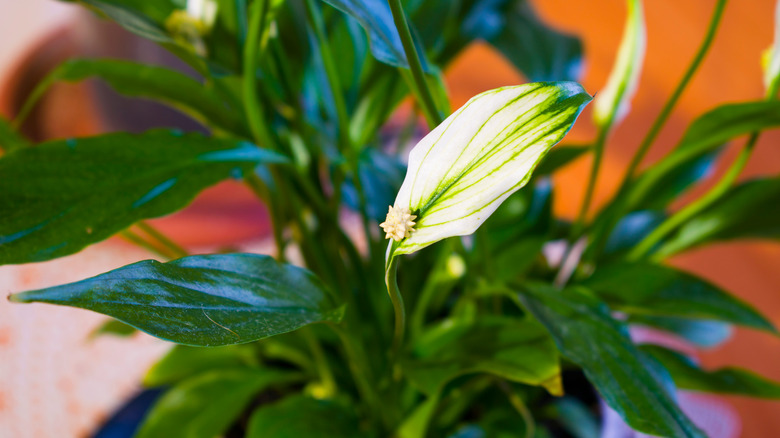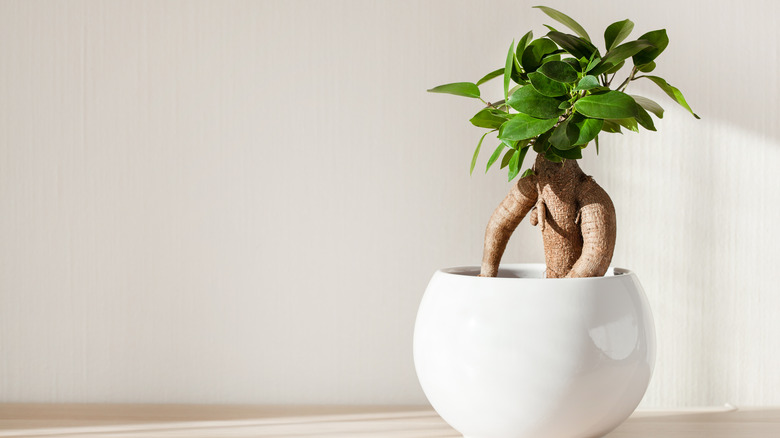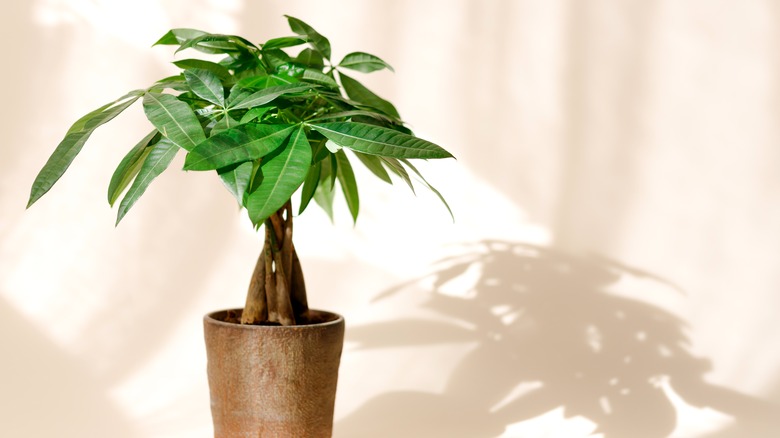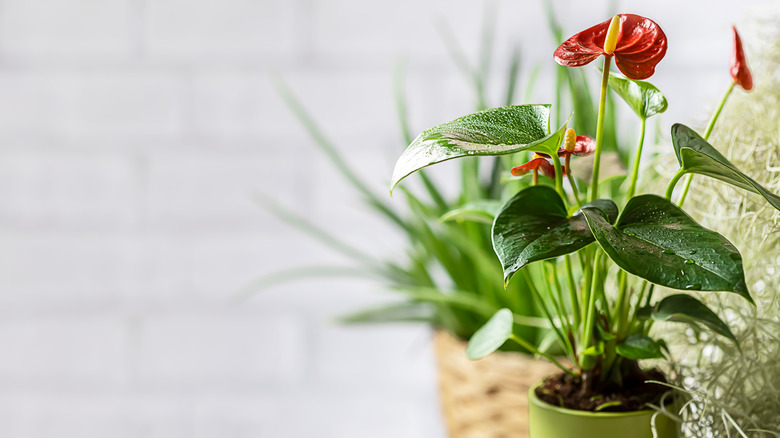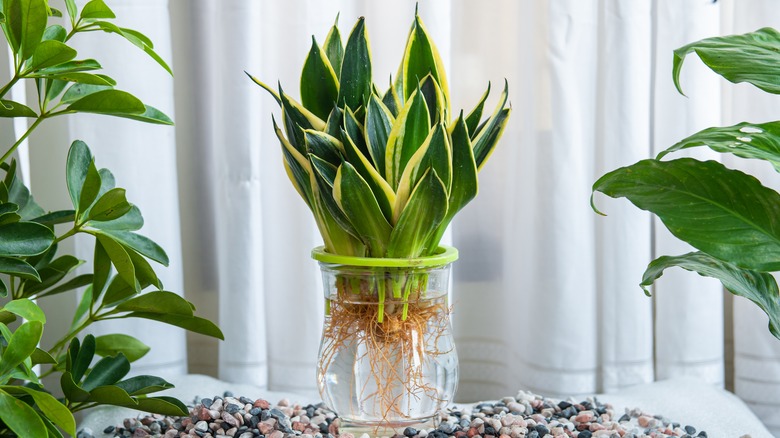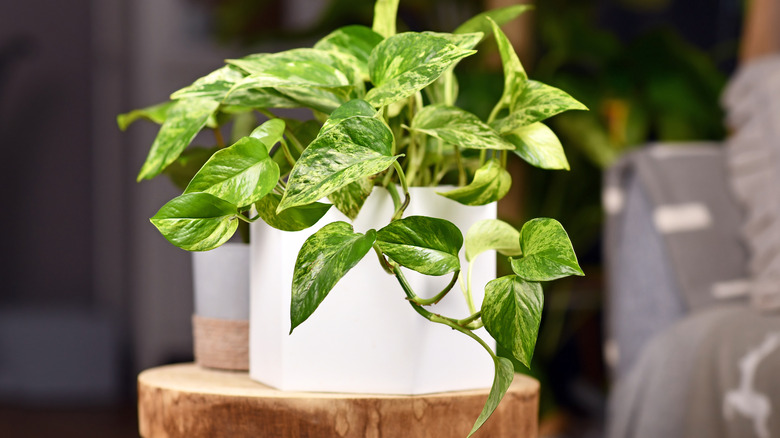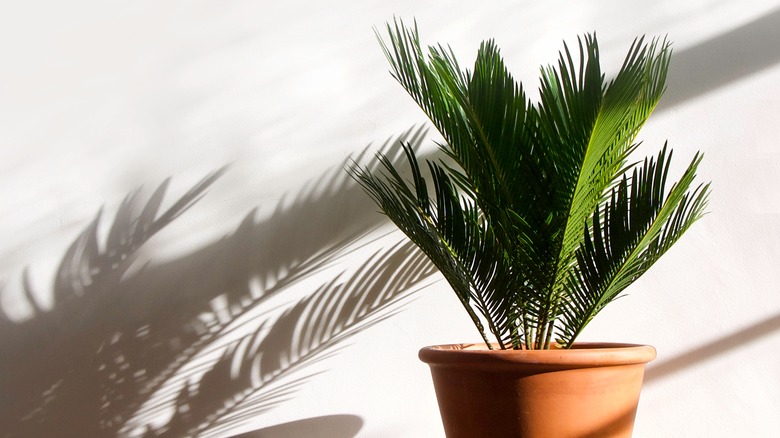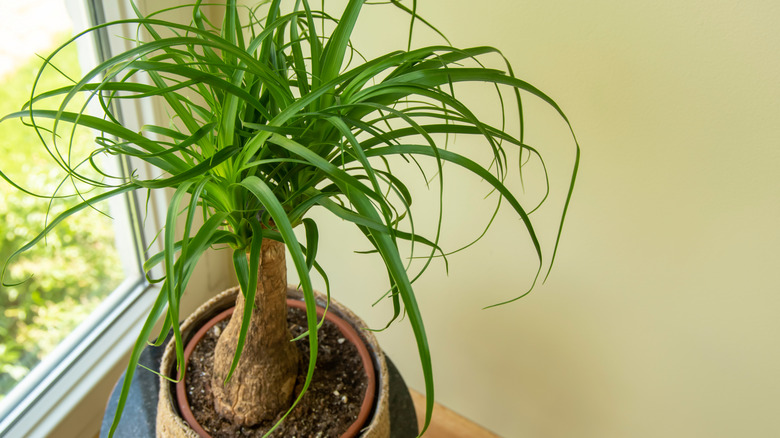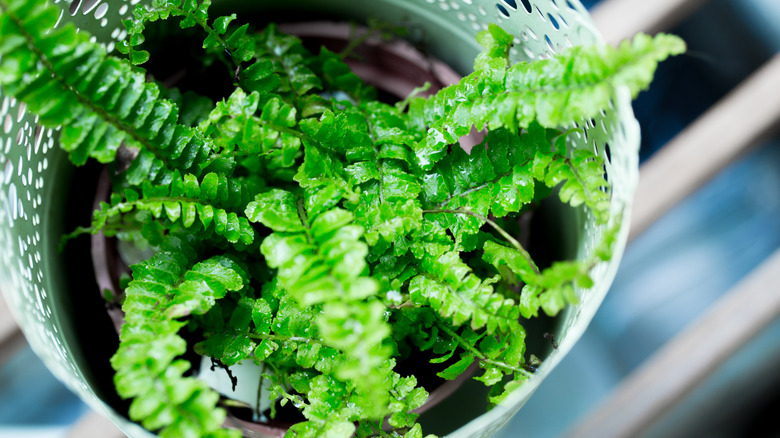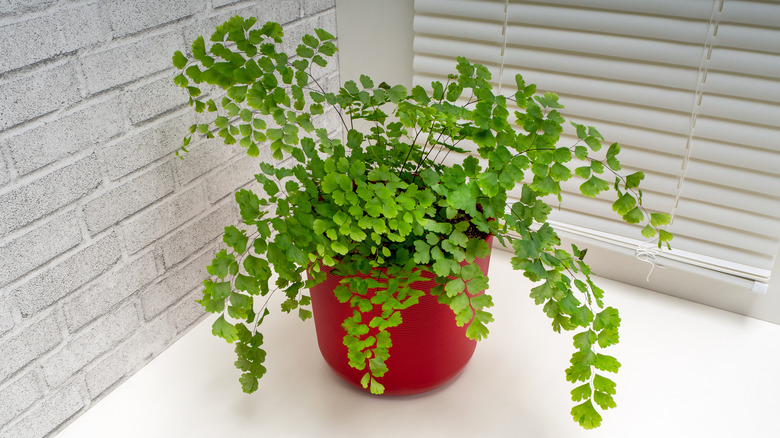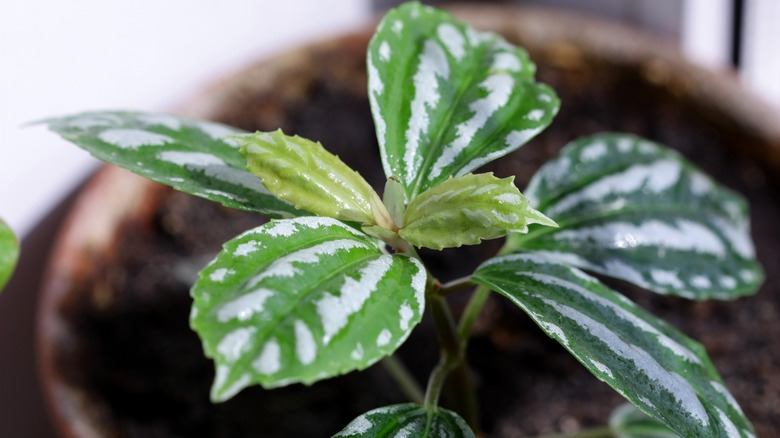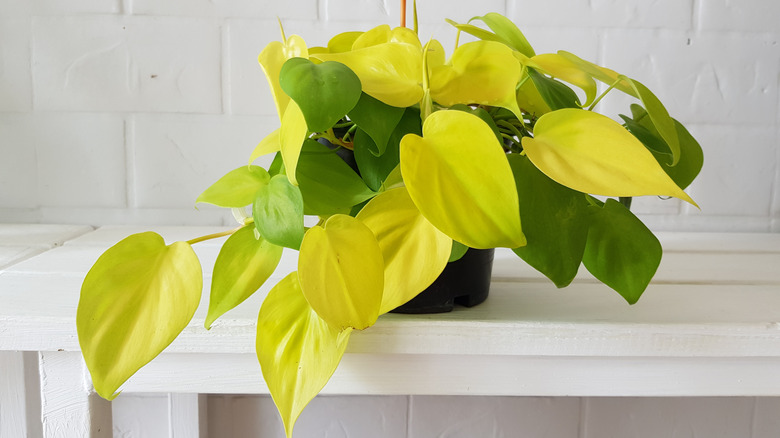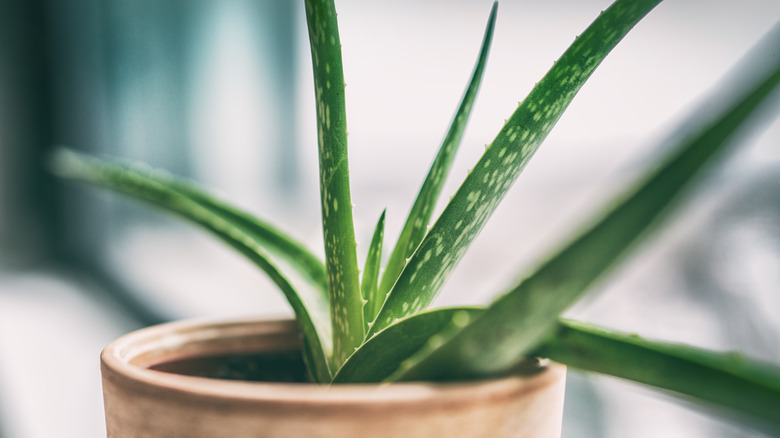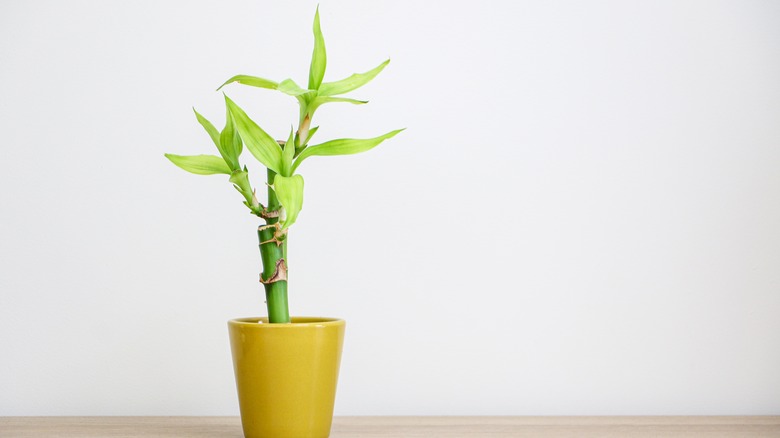15 Houseplants You Should Keep In Your Dorm Room
It can be stressful and overwhelming when leaving your hometown and moving into a small dorm room among hundreds of other young college students. While the smells, sounds, and people are all new, the best way to feel more comfortable is to give your new living space some homey touches.
We're sure you've already made your bed with the perfect sheet set, put together baskets holding your school supplies, and maybe tucked away your teddy bear into an inconspicuous spot. However, there's another change you can put into action to breathe easier and give your dorm even more personal flair.
Many houseplants are scientifically proven to reduce stress, increase productivity, and filter the air around you, according to Healthline. With more clean oxygen in your room and the energy to get things done, your first semester at college can be extremely fruitful, worthwhile, and fun. Not sure where to start? Here are 15 of the best indoor plants to get you started on turning your dorm room into a green sanctuary.
1. ZZ plant
The ZZ genus (Zamioculcas zamiifolia) is a unique house plant that will give your dorm room some exotic flair as it grows. This perennial is known for its glossy leaves that almost look fake if you don't take a close look. If your schedule is extremely busy this semester, this plant is perfect because it needs very little sunlight and water, according to the University of Florida.
Bloom Season: Mid-summer to fall
USDA Growing Zone: 9 to 10
Growing Conditions: Medium to low indirect light
Soil Type: Well-drained potting mix
Size: 16 to 30 inches tall
2. Peace lily
The peace lily plant (Spathiphyllum) is usually grown indoors due to the finicky care requirements that make it difficult to grow outside. As a houseplant, the peace lily grows quite tall and needs little attention other than some occasional watering, per the Clemson Cooperative Extension. Make sure to provide it with bright indirect light and moist, well-draining soil.
Bloom Season: Spring
USDA Growing Zone: 10 to 11
Growing Conditions: Bright indirect light
Soil Type: Well-drained potting mix
Size: 1 to 6 feet tall
3. Bonsai tree
Bonsai trees (Ficus microcarpa) have been a favorite of college students crammed in tight dorm rooms for some time. These small-growing trees help to relieve stress and increase your productivity as you care for them each week. Still, an established bonsai tree won't need much attention if finals week becomes too busy, notes North Carolina State Extension. It will continue growing happily as it waits for your schedule to slow down.
Bloom Season: Rarely flowers indoors
USDA Growing Zone: 9 to 11
Growing Conditions: Bright light
Soil Type: Well-draining loam or sand
Size: 40 feet tall outdoors
4. Money tree
Money trees (Pachira aquatica) are easy-to-grow plants that are said to bring their owners luck and good fortune. If you need a little extra help with money, classwork, or good luck in general, growing a money tree could be beneficial. Even if you don't believe in luck, growing interesting plants like this are said to reduce stress and clean the air in your dorm room, according to the University of Arizona.
Bloom Season: Spring
USDA Growing Zone: 9 to 11
Growing Conditions: Indirect sunlight
Soil Type: Well-draining
Size: 16 to 20 feet tall outdoors
5. Anthurium
Anthurium (Anthurium andraeanum) is a species of blooming plants that are known for their heart-shaped, pink or red spathes, and yellow spadix, according to RHS. Also known as the flamingo flower, this tropical house plant blooms throughout the year to brighten up any small room. Thankfully, they are easy to please too, as you can place them in a west-facing, south-facing, or east-facing window.
Bloom Season: Year-round
USDA Growing Zone: 11 to 12
Growing Conditions: Bright to medium light
Soil Type: Well-drained loam or sand
Size: 4 to 20 inches tall and wide
6. Snake plant
The snake plant (Sansevieria trifasciata) is a popular houseplant around the world known for its thick, lance-shaped leaves and easy care requirements. Snake plants are always drought-and neglect-tolerant, which makes them a great option for busy college students. According to Penn State Extension, snake plants are natural air purifiers, too.
Bloom Season: Spring
USDA Growing Zone: 9 to 11
Growing Conditions: Medium to low indirect light
Soil Type: Well-drained potting mix
Size: 6 inches to 3 feet tall depending on the variety
7. Pothos plant
Pothos plants (Epipremnum aureum) are widely known for their heart-shaped leaves and drought and neglect tolerance. If you're looking for something that's easy to grow and forget about, this houseplant is for you. As suggested by The Sill, check out a few different varieties before buying them because there are so many beautiful cultivars of the plant.
Bloom Season: Does not flower
USDA Growing Zone: 10 to 12
Growing Conditions: Bright, medium, or low indirect light
Soil Type: Well-draining potting mix
Size: 6 to 10 feet long when grown indoors
8. Sago palm
Sago palms (Cycas revoluta) are a member of the Cycadaceae family, which means they are technically cycads. Cycads are characterized by a crown of pinnate leaves that are hard, stiff, and evergreen. Grown outdoors, the sago palm can reach about 10 feet tall, as per the Missouri Botanical Garden. However, don't fret, as they can be kept much smaller indoors with the right technique.
Bloom Season: Does not flower
USDA Growing Zone: 9 to 10
Growing Conditions: Bright indirect light
Soil Type: Well-draining, sandy, or humusy
Size: 3 to 10 feet tall
9. Ponytail palm
Ponytail palms (Beaucarnea recurvata) are common houseplants that you've likely seen again and again. This short-growing indoor palm is known for its thick trunk and thin leaves that have a hair-like appearance, hence the common name. North Carolina State Extension notes the ponytail palm should be kept near a sunny window, and it can be moved outdoors in the summer.
Bloom Season: Spring and summer
USDA Growing Zone: 10 to 11
Growing Conditions: Bright indirect light
Soil Type: Sandy and well-draining
Size: Less than 4 feet tall when container-grown
10. Boston fern
The Boston fern (Nephrolepis exaltata 'Bostoniensis') is a wonderful, foliage-filled plant that is typically kept in a hanging planter. This fern can be grown indoors or outdoors depending on where you live, but it can not survive harsh winters, according to the University of Wisconsin-Madison. Still, keep in mind this plant will shed some leaves if it isn't cared for properly, which can cause a frustrating mess in your dorm room.
Bloom Season: Does not flower
USDA Growing Zone: 9 to 11
Growing Conditions: Bright indirect light
Soil Type: Well-draining
Size: Up to 7 feet tall
11. Maidenhair fern
The northern maidenhair fern (Adiantum pedatum) is similar to the Boston fern, but its leaves are finer in texture, per the Prairie Nursery. It doesn't need bright light to survive and actually prefers a shadier location to grow in. If you properly care for this fern as it gets comfortable in its pot and new setting, the northern maidenhair fern will reward you with easy care needs once it's established.
Bloom Season: Summer
USDA Growing Zone: 3 to 8
Growing Conditions: Medium to low indirect light
Soil Type: Well-drained potting mix
Size: 1 to 2 feet tall
12. Aluminum plant
Aluminum plants (Pilea cadierei) are known for their foliage, which is splashed with a metallic color that gives it its common name. This indoor plant can grow in different conditions as long as its room has plenty of humidity, says the Missouri Botanical Garden. It grows in a range of light conditions and soil types, which makes it a good houseplant.
Bloom Season: Rarely flowers indoors
USDA Growing Zone: 11 to 12
Growing Conditions: Bright, medium, or low indirect light
Soil Type: Well-drained potting mix
Size: 9 to 12 inches tall and 6 to 9 inches wide
13. Heartleaf philodendron
The heartleaf philodendron (Philodendron hederaceum) is a climbing vine that can turn your dorm room into a leafy paradise. A quick grower, this philodendron species can trail on your walls with some support, and it's easy to move when you graduate. North Carolina State Extension states that this vine grows quite long — up to 13 feet — so watch it carefully and prune as needed.
Bloom Season: Spring and summer
USDA Growing Zone: 10 to 11
Growing Conditions: Bright indirect light
Soil Type: Well-draining potting mix
Size: 4 inches to 6 feet long
14. Aloe vera
Aloe vera (Aloe barbadensis) is a multi-use plant that you can care for indoors. It grows rapidly, allowing you to harvest aloe vera gel from it frequently. The gel from the plant is known to help heal burns, cuts, and scrapes, as the University of Florida points out. Money can be tight for college students, but this plant can save you money on basic medical products at the store.
Bloom Season: Late winter to spring
USDA Growing Zone: 8 to 11
Growing Conditions: Bright to low indirect light
Soil Type: Well-draining
Size: Up to 2 feet tall
15. Lucky bamboo
Lucky bamboo (Dracaena sanderiana) is an herbaceous perennial in the asparagus family that is commonly grown indoors. In dorm rooms, it should be kept away from windows that will provide it with too much direct sunlight, per the Missouri Botanical Garden. In its natural habitat, lucky bamboo grows on top of pebbles in water, and it will grow happily if you mimic this environment.
Bloom Season: Rarely flowers indoors
USDA Growing Zone: 9 to 12
Growing Conditions: Medium to low indirect light
Soil Type: Evenly moist substrate
Size: 3 to 5 feet tall and wide

